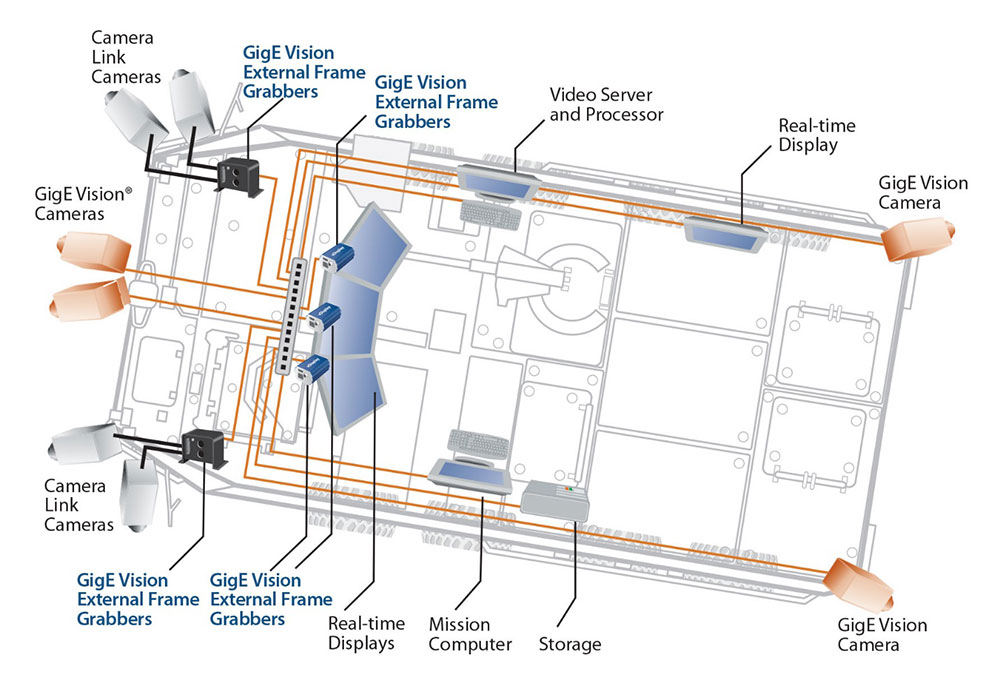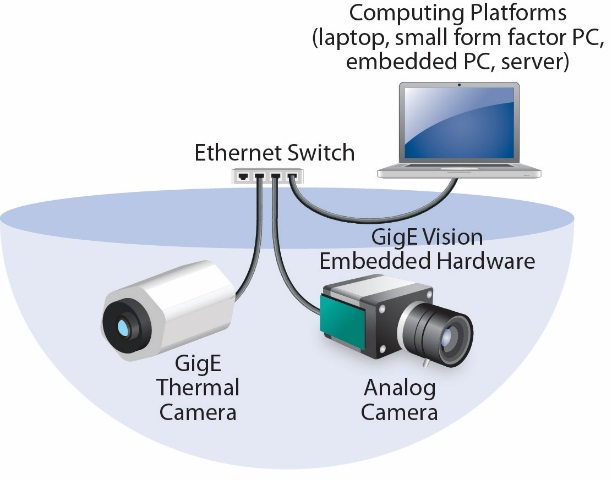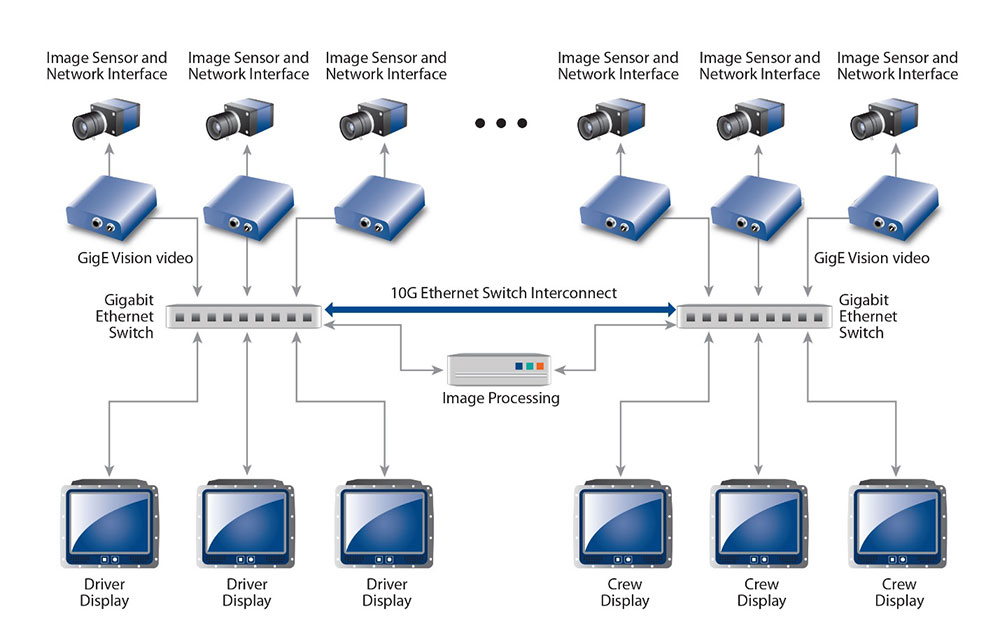Vision Advantages for Military Imaging
As published in MVPro
A manufacturing floor and battlefield may seem worlds apart, but technologies perfected for machine vision applications are increasingly finding a place in military imaging systems.
Industrial vision evolved into viable commercial technology when it adopted Gigabit Ethernet (GigE) for real-time video delivery. Ethernet brought flexible networking, wider computing platform choice, and cabling advantages to real-time imaging. For military designers facing the same networking, computing, and cost challenges – plus an increasing demand for commercial versus proprietary technologies – GigE is a natural choice for video transmission.
Design Benefits of GigE Vision
GigE allows military manufacturers to easily upgrade or design vision systems that integrate different types of cameras, displays, and processing computers into a real-time video network. In a local situational awareness (LSA) system for ground-based vehicles, crew members rely on real-time video to navigate the windowless vehicle and survey surroundings.
In these sophisticated systems, video and data from various imaging sources must be shared across multiple endpoints – including computers used for automated analysis and display panels for human observation. Real-time video from analog cameras is converted to an uncompressed GigE video stream and delivered over the multicast Ethernet network to displays and processing equipment at various points within the vehicle.

Freed from the need for a peripheral card slot to receive video, designers can meet size, weight, power and cost (SWaP-C) objectives by choosing from a selection of small form-factor and low-power computing platforms for image processing and control. Video, control data, and power are transmitted over a single cable; reducing “cable clutter” in the vehicle. The flexible, lighter, field-terminated Ethernet cables cost less and are simpler to install than the bulky cabling and connectors of legacy interfaces.
With all devices connected to a common infrastructure and straightforward network switching, multiple streams of video can be transmitted to any combination of mission computers and displays. In Ethernet-based system built with quality components, end-to-end (or glass-to-glass) latency is less than 80 milliseconds.
Troops can decide which video streams they need to see without any changes to cabling or software configurations, and video from multiple sources can be combined for use by others in the vehicle. For example, the video feed from visible light cameras can be converted to Ethernet packets and blended with video from a native GigE thermal camera to provide more detail on a region of interest.

GigE and Military Standards
A complex set of military standards outline the mechanisms and protocols for distributing digital video in vehicle electronics (vetronics) systems. While these standards are intricate, design approaches adopted by the machine vision industry help designers meet their overarching goal to simplify design and lower costs, ensure interoperability, and support easily scalability.
The British Ministry of Defense (MoD) Vetronics Infrastructure for Video over Ethernet (VIVOE) Defence Standard (Def Stan 00-82) outlines how multiple cameras, image sources, displays, and processing platforms should distribute and receive information using the same network infrastructure. The NATO Generic Vehicle Architecture (NGVA) is a further extension of this standardization effort to meet a broader set of requirements, including unmanned systems.
Def Stan 00-82 defines an architecture that helps lower costs and improve performance for end-users. With an architecture based on open standards and protocols, multi-vendor solutions can be integrated into a system, the same technology is easily redeployed across multiple platforms (for example, different vehicle types), and the system can be upgraded with more advanced sensors, displays, or processing systems. Video sources and display endpoints may have an integrated Ethernet interface, or interface modules can be used to convert legacy connections into Ethernet.

Similarly, the the U.S. DoD Vehicular Integration for C4ISR/EW Interoperability (VICTORY) initiative was first introduced to avoid interoperability and scalability issues during “bolt on” retrofit upgrades of land-based vehicles. Today, VICTORY guidelines also encompass new situational awareness systems. In addition, the DoD Motion Imagery Standards Board (MISB) has selected GigE Vision as the recommended method to transmit and receive compressed and uncompressed video and associated metadata.
Developing imaging systems based on Ethernet technologies helps designers meet two critical objectives of the VICTORY initiative: the use of commercial off the shelf (COTS) products and technologies to enable multi-vendor integration and avoid vendor lock-in; and component selection to help reduce SWaP-C in space-constrained vehicles.
Considering the basic aims of military vetronics standards, Ethernet-based imaging systems ensure interoperability in a fully networked, multi-vendor environment. Designers can leverage the performance benefits of Ethernet, including lighter and longer reach cabling, networking flexibility, full-duplex connections, and support for uncompressed and compressed video. Imaging systems can be designed based on COTS technologies, including networking equipment, PCs, laptops, and displays, with a scalable architecture that enables future addition of new imaging sources, displays, and processing technologies.
For military applications, real-time video is enabling new generations of vision systems that cost less, weigh less, and are easier to use than systems based on legacy point-to-point standards. Beyond LSA systems, Ethernet-based video solutions are ideal for vision systems for sighting, threat detection, weapons targeting, and surveillance in naval vessels, manned and unmanned airframes, and standalone systems for persistent surveillance.
Ed Goffin is marketing manager with Pleora Technologies, a leading provider of video interfaces for military, medical, and machine vision imaging systems.